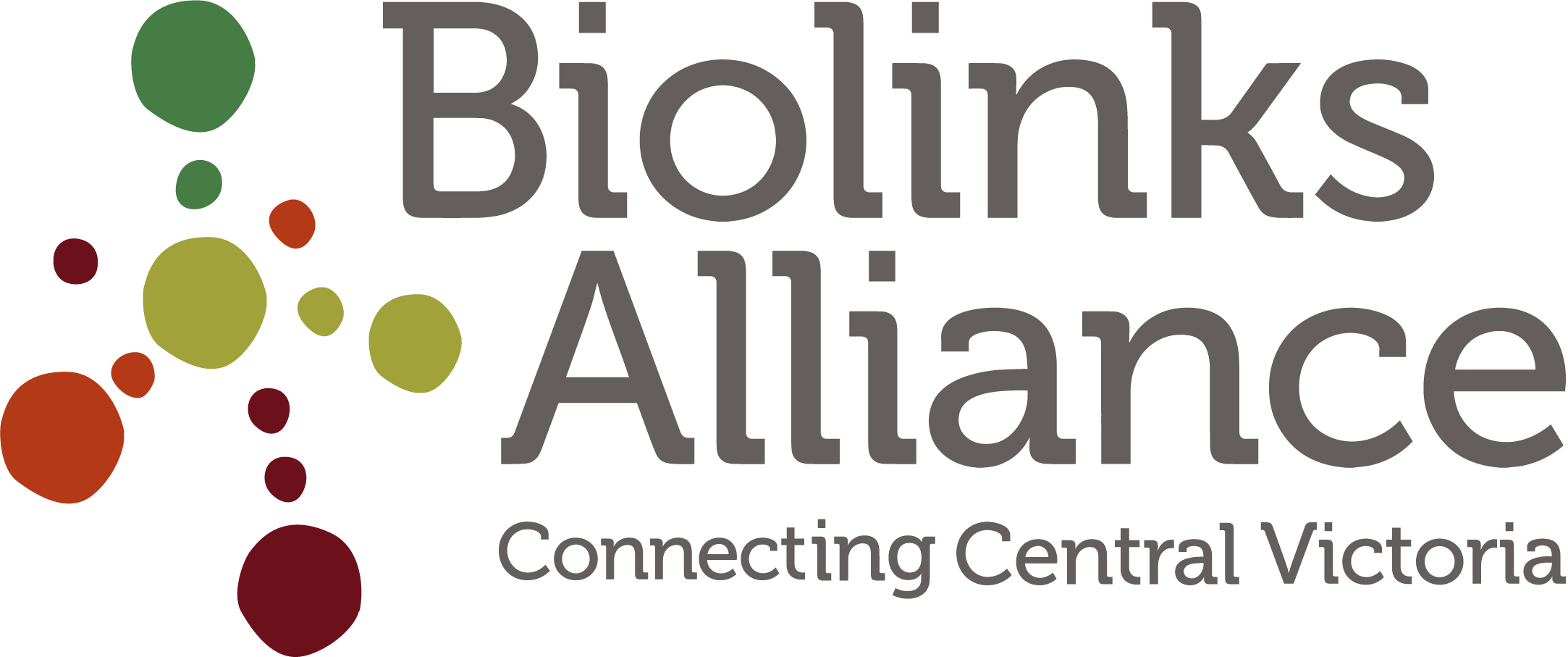Annual General Meeting
3.00 pm - 4.30 pm Friday 27 November, 2020
Zoom meeting
Zoom Meeting ID: 894 0575 3180
https://us02web.zoom.us/j/89405753180?pwd=ckRvSmpkTXZGQXRjM2lFL3JSN2VpZz09
Meet the team:
Biolinks Alliance Staff
With no travel or face to face networking this year – staying in touch has been challenging. However, lots has happened. Hear from our staff who, behind the scenes (and screens), have made great progress.
New approaches to climate proofing habitat:
Guest Speaker, Paul Foreman
Biolinks Alliance Ecologist and consultant Paul Foreman, will speak about an exciting forest health restoration project being planned in the box-iron bark forests in the Heathcote Region. The Spring Plains Watershed Repair project brings together a range of techniques, including ecological thinning and contour ripping, that have never before been employed together at a landscape scale, aiming to demonstrate how the health of bushland of central Victoria can be quickly and cost effectively restored.
Program
3 pm AGM
3.30pm Meet the team
3.45pm Guest Speaker & Discussion
4.30pm Finish
RSVP to Peter Evans by Nov 25.
Peter@biolinksalliance.org.au
AGM Documents
Agenda, Chair and Treasurer’s Reports
Minutes & reports from 2019 AGM
Paul Foreman with Taungurung Elders Shane Monk and Sherryn Antonopoulis and archaeologist Francisco Almeida at Peters Gully, the catchment in the Springs Plains Nature Conservation Reserve, Heathcote that will be the focus of the Spring Plains Watershed Repair Project
More about Paul Foreman’s talk
The Spring Plains Watershed Repair project integrates a range of restoration techniques that, at least in central Victoria, have never before been combined at a landscape–scale to demonstrate how the health bushland damaged by goldmining and timber cutting (amongst other things) can be quickly and cost effectively restored. These include: contour ripping (soil water infiltration), direct seeding natives grasses (soil biology and understorey health), grazing pressure management (to maximise understorey regeneration), ecological thinning (habitat and landscape health), and ‘leaky weir’ ponding (gully hydration). If we going to halt species extinctions and ecological breakdown, and to build resilience to Climate Change in our environment, we need efficacious technologies/strategies. If successful, we believe the ‘Spring Plains’ project has great potential as a kind of ‘modular’ solution, that could be adapted, amplified and repeated in watersheds – large and small – throughout the region. Using watersheds has been a conscious choice, firstly because they are the logical, natural management unit for restoration activities, and secondly they challenge the community to ‘see’ the landscape through an ecological lens (as opposed to paddocks and properties; and immediate time frames). Some would even argue this (spatial and temporal) ‘transcendent’ view better aligns with the cosmology of First Nations people and represents a much more meaningful way for contemporary society to engage with, support and collaboratively learn from Aboriginal Australians.


